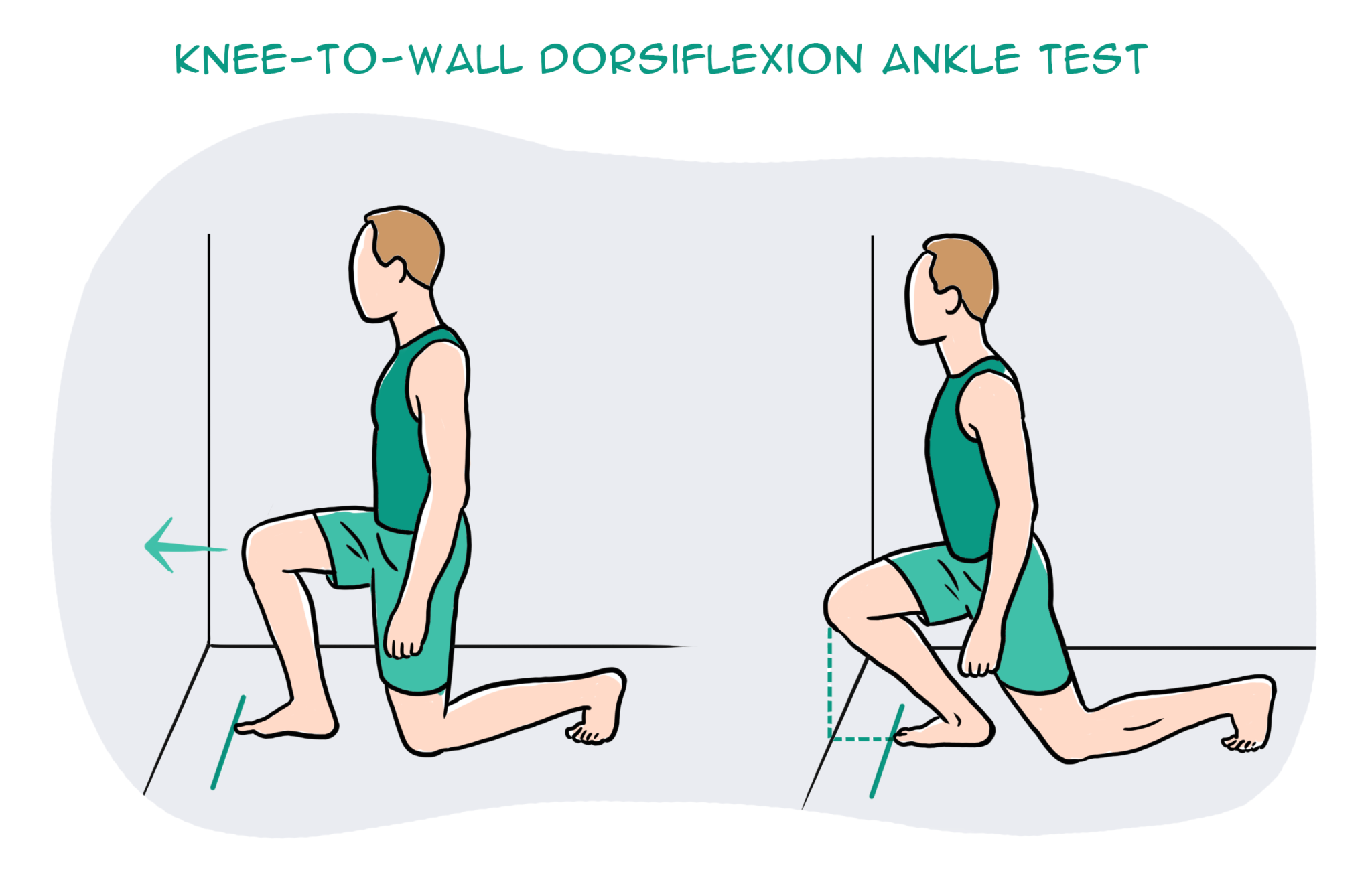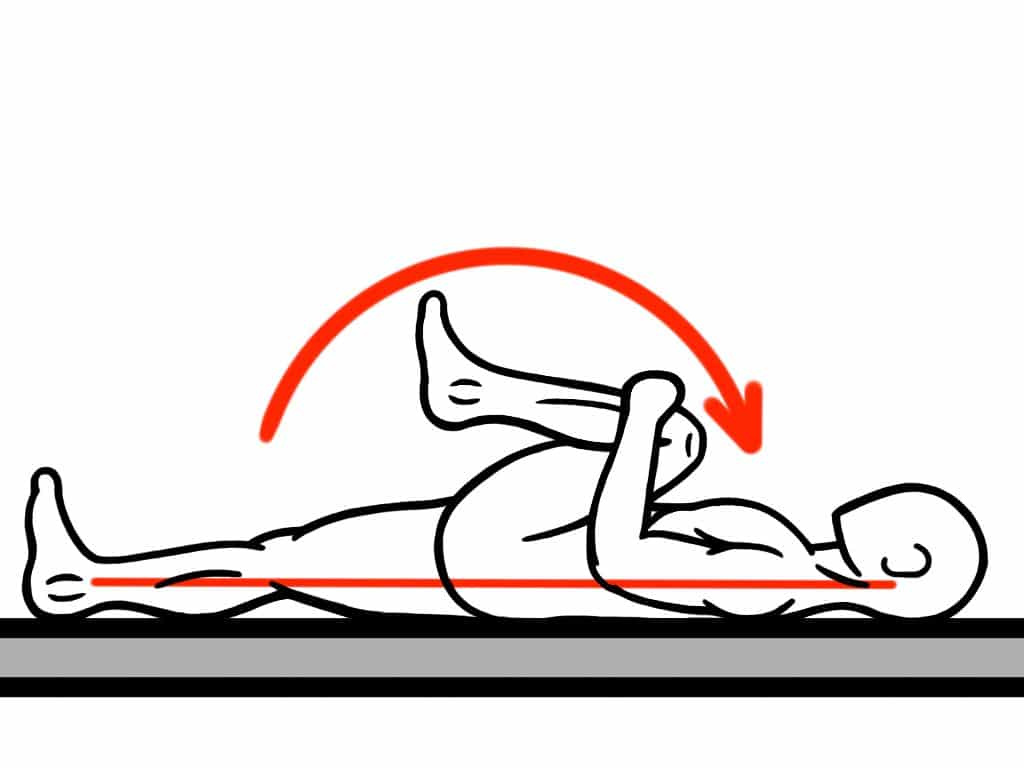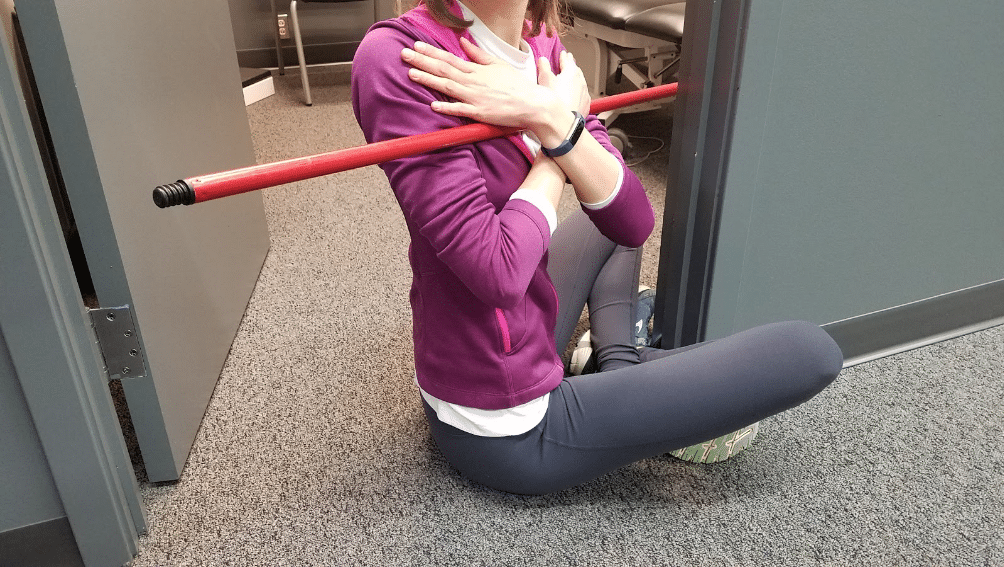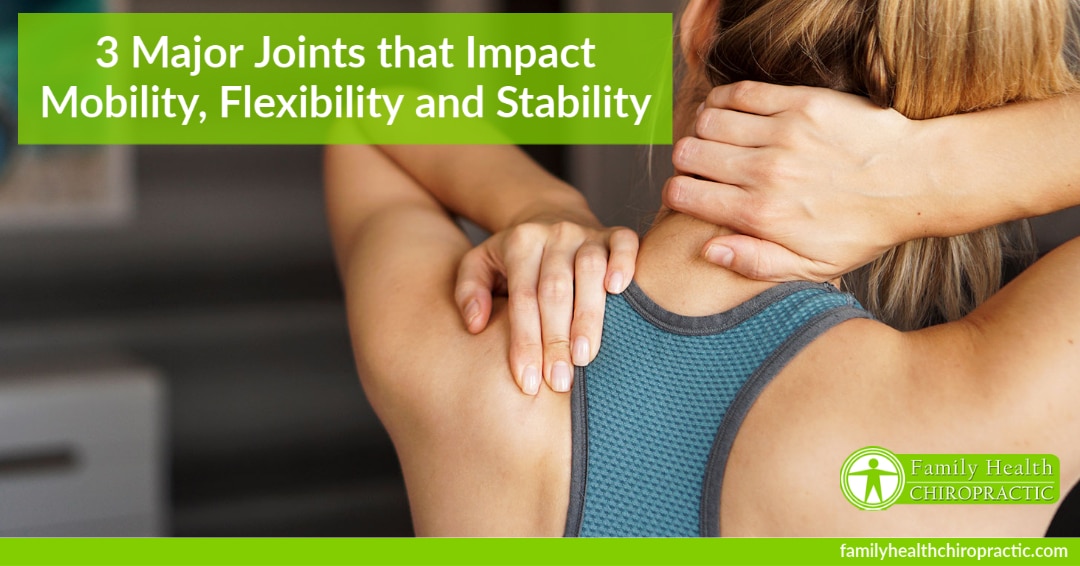If you're reading this, you've likely experienced pain at a joint or muscle.
Experts estimate that 80% of the population will experience back pain at some time in their lives.
Back pain can affect people of all ages – young and old – and is the 3rd most common reason for visiting a doctor.
Traditionally, we are quick to blame the affected body part and address it in a localized fashion.
If you have back pain, you'll want to focus on your low back. If you have neck pain, of course you're going to think you've got a neck joint problem. The same is true with bad knees, shoulders, ankles and wrists.
Unfortunately, it doesn't' work that way.
We all know that the ankle bone is connected to the knee bone, and the knee bone is connected to the hip bone.. etcetera etcetera.
So could it be possible that your nagging back problems are due to your ankles?
Could your chronic neck pain be due to your mid back or thoracic spine?
Absolutely. While treating the ‘painful’ body part can potentially improve your symptoms, not addressing the underlying dysfunction will simply lead to chronic pain.
In this article, I'm going to discuss 3 major joints that can cause dysfunctions in other parts of the body.
Mobility, Flexibility and Stability
If you don't already know it, human movement is extremely complex.
The simple act of walking requires every muscle in your body to either move or stabilize another body segment to deliver a ‘simple’ step.
Fortunately, there are biomechanical and physical medicine experts that have come up with various ways to analyze human movement and the dysfunctions it can be associated with.
Many of these experts suggest that the body could be seen as “just a stack of joints” with each having a main function that alternates between the need for flexibility, mobility and stability, starting from the bottom-up.
- Mobility is the ability of your body and joints to move their full range of motion through space.
- Flexibility is the maximum stretch tolerance or ability of a joint to be taken to end range of motion.
- Stability is the ability of a joint to be controlled through movement or limit excessive movements of a body part.
If you have a joint or set of joints that lack the necessary mobility, the ‘stable’ joint or body part above or below will have to compensate and possibly result in pain and/or injury.
What this means is that your ankle mobility problems could be causing low back and hip pain.
Someone who has thoracic or mid back mobility issues can experience chronic neck and or shoulder pain.
So whether you are a professional athlete, weekend warrior, or avoid athletic activity at all costs, your flexibility, mobility and stability are all an inevitable part of life.
Prior to the COVID19 pandemic, we lacked the daily movement necessary to keep our joints healthy. Today, the sedentary lifestyles have become much more prevalent, creating an array of movement dysfunctions in the process.
The problem with movement dysfunctions is that they can often be masked by a lack of symptoms, but much like a tight pair of pants, it’s a matter of time before they break.
Unfortunately, it is not until pain shows its ugly face that people seek a remedy.
Although Chiropractic care is certainly effective at treating pain, it is also incredibly effective at preventing it.
Regardless of your current condition, pain or painless, I encourage you to learn how to identify your movement dysfunctions and treat them independently.
Ankle Mobility
The foot and ankle are the base of our entire body when standing.
Lack of mobility of the ankle, specifically dorsiflexion, can force the rest of the body to compensate in ways that can really interfere with movement.
Activities as simple as walking, sitting down, squatting, and jumping can be affected by a lack of mobility at the ankle.\
Causes of Poor Ankle Mobility
Like anything else, there are a number of factors that contribute to poor ankle mobility (specifically dorsiflexion). Here's a few to consider:
- A lack of flexibility in the calf muscle. Wearing shoes with a raised heel (especially womens shoes) is a great way to cause this.
- Former athletes who accumulated injuries over time. This includes rolling the ankle, spraining the ankle and/or joint capsule scar tissue buildup.
- Any injury that resulted in you shifting your body weight more to one side than the other. Hip misalignments, shorter leg on one side and hamstring injuries can all contribute.
Testing Ankle Mobility
The Knee-To-Wall Dorsiflexion test is an easy way to assess your ankle mobility.
Simply get set up in a half kneeling position near a wall with your barefoot laying flat on the surface. Measure 4.5 inches for women and 5.5 inches for men from the wall to your big toe.
Then, while keeping your heel flat on the ground, try to move your knee directly forward over your toes in attempt to touch the wall. If your knee is unable to touch the wall, move your big toe towards the wall and try again until you find the exact distance that you can just touch the wall with your knee before your heel lifts.
Take a break and perform on the other side, record your score in terms of how far your big toe is from the wall in inches, centimeters, or fingers (whichever you prefer, just make note of it so you remember when it comes time for reassessment).
Some rules to remember with this assessment.
- Make sure your heel stays on the ground.
- Be mindful of your arch position, it is ok for your arch to lower a little bit, but don’t completely drop your arch so it is flat on the ground.
If you're a woman and your ankle dorsiflexion is less than 4.5 inches, you've got ankle dorsiflexion problems.
If you're a man and your ankle dorsiflexion is less than 5.5 inches, you've got ankle dorsiflexion problems.

Structures that Can Be Impacted by Poor Ankle Dorsiflexion:
Knee: To put it simply, the knee was made to bend and extend in one direction only. It has minimal rotational or side bending abilities. However, if the ankle is not moving as it should, the knee is left with the task of dissipating the stress that the ankle passed upwards. Obligating it to move in those ways it was not designed to move. A common example of this would be the infamous ‘knee valgus’, which undoubtedly could lead to injury.
Lumbar spine (low back): An easy way to visualize the interconnectedness of the ankle and the spine is by performing a squat. If the ankle’s dorsiflexion comes to a halt during the descending portion of a squat, meaning the knees are simply not allowed to continue moving forward, then the body will compensate by rounding the low back in order to maintain balance and reach further depth. Needless to say, this process done over and over will lead to back pain.
Hip Mobility
The hip is a complicated joint segment that is designed to be one of the most mobile joints in the body.
In order for the hip to function effectively, it also requires a high level of stability.
Unfortunately, as we age the hip tends to lose its mobility, and living a sedentary not only contributes to less mobility but a loss of stability, resulting in all sorts of issues.
Causes of Poor Hip Mobility
Again, a sedentary lifestyle is what typically leads to hip problems. The primary reason is that excessive sitting causes the muscles in and around our hip to become weak and inactivated. The progressive weakness and tightness of the muscles eventually causes hip dysfunctions.
A few other common causes include:
- standing after long periods of sitting
- hyper lordotic postures or tipped pelvis
- leaning on one hip or leaning on one leg more than the other
- sleeping on the same side every night
- uneven leg lengths
Testing Hip Mobility
There are two tests that can help to identify a loss of hip mobility and flexibility: the Hip Flexion Test and Knee Flexion Test.
The Hip Flexion Test is done by simply laying on your back in a rested position. Next, pull one knee up to your chest and keep the opposite heel flat on the floor with a completely straight knee.
Align the kneecap with the heart and attempt to touch the raised thigh to the front of your torso.
If you cannot press the thigh into your torso and keep the opposite leg flat on the ground, you've got to work on your hip mobility, back and hamstring muscles.

The Knee Flexion Test is done by laying on your stomach and reaching one hand back for the same side ankle.
Next, pull the foot towards your hips until it touches your glutes and keep both sides of your chest evenly pressed into the floor.
Do not allow your torso or hips to roll towards one side or the other.
Stay square and attempt to touch the heel to your hips.
If you cannot complete this movement, you need to work on your quadriceps and hip flexors.
Structures that Can Be Impacted by Poor Hip Mobility
Knee:This most commonly occurs due to lack of stability at the hip, from improper activation of the hip abductors, external rotators, and extensors. Furthermore, the low back can also be directly affected for the same reasons. Nonetheless, restoring hip mobility first is still paramount before addressing stability. The goal of addressing mobility first is to position the hip in correct alignment, allowing it to function adequately. Then, we can train stability by teaching the muscles to fire as needed.
Lumbar spine (low back): If the hip lacks flexion and internal rotation mobility, the spine will have to bend forward to make up for it. Try to touch your toes while keeping your back straight, do not worry, not succeeding is completely normal in this case. More than likely at some point during the movement, you had to bend your back to reach further down. Conversely, if the hip lacks extension and external rotation, the back will have to bend backward to account for the loss of mobility. Now place your hands on your hips and try to bend backward at the hip while keeping your back straight. Much like in the other example, your spine will have to bend backward to continue moving, which is also completely normal. With that being said, if the hip lacks adequate mobility while performing activities as common as walking, running, squatting, jumping, etc. the low back will have to compensate for it.
Thoracic (Mid Back) Mobility
The spine is divided into three sections: cervical (upper), thoracic (mid), and lumbar (lower).
Each has its own unique natural curvature that can also impact mobility, flexibility and stability.
The thoracic spine is most importantly involved in rotation, which is the way we generate power for throws and sprinting.
Many people have tightness in this area, which can have a huge impact on the way they move.
This joint complex is frequently under-evaluated and undervalued, considering its importance for posture and human movement.
Who has not spent hours slumped in a chair staring at a phone?
Unfortunately, sustaining the mid and upper back in a forward bent or ‘rounded’ posture for extended periods of time, for years on end, has potentially negative consequences.
Through time, the mid and upper back adapts to this position and adopts it.
Consequently, losing its mobility in the process.
Thoracic spine mobility is a precursor to optimal neck health, shoulder health, and so much more.
Yet, the average person is bound to be stiff and limited in this region and the rest of their mid back!
Testing Thoracic Mobility
The best way to assess for thoracic mobility is a Seated Thoracic Rotation test.
Sit cross-legged facing a door jam. Hold a dowel rod (pvc pipe, broom stick, etc) at chest height with your arms crossed.
Without leaning forward or bending the spine, twist to tap the rod on each side of the door jam.
If you can tap each side without leaning forward or lifting your arms off your chest, you pass.
If you cannot touch the dowel or rod to the door jam without leaning forward or lifting your arms, you've got thoracic mobility issues.

Another simple test is the Supine Overhead Reach test.
For this test, you simply lay on your back with your legs straight. Lift your arms straight overhead and then back towards the ground above you. Try to do this without arching your back or lifting your chest.
If you can lay your arms flat on the ground without arching or lifting your chest, you pass.
If you have to move your arms away from your head, your back arches or you have to lift your chest, you've got thoracic mobility issues.

Structures that Can Be Impacted by Poor Hip Mobility
Neck: With the mid and upper back in a ‘rounded’ position, the neck is forced to extend (bringing the chin up), in order to not stare directly at the ground. Not only could this posture stress the vertebrae in the neck, it also tenses the upper back muscles as they are tasked with maintaining the head looking up.
Neck:More often than not, a ‘rounded’ mid and upper back, will result in rounded shoulders as well. Consequently, the shoulder blades are now protracted (slide forward) and upwardly rotated (top of shoulder blade rotates towards spine, bottom rotates away from the spine). As you would expect, this affects the length and tension of different surrounding muscles. Additionally, the aforementioned motion of the shoulder blades (protraction and upward rotation) must occur during the act of raising your arm overhead. However, this motion has already occurred by maintaining the ‘rounded’ back posture. Try it for yourself, sit in and maintain a slumped posture and try to lift your arm above your head. Now sit upright and do it again. Your shoulder should have been able to move better when you were sitting upright. Like a domino effect, lack of mobility at the mid and upper back leads to lack of stability at the shoulder blade, subsequently causing lack of mobility at the shoulder. Evidently, this can cause pain and/or injury at the shoulder.
Lumbar spine (low back): Similar to the neck, with the mid and upper back ‘stuck’ in a ‘rounded’ position, it has lost its ability to fully extend (straighten). Therefore, the low back is now obligated to extend to maintain a ‘fake’ upright posture. This problem is aggravated by misalignments at the hip previously mentioned. No different than in the neck, this maintained posture also affects the lumbar vertebrae and places increased stress towards the low back muscles in order to maintain an over extended posture.
Closing Thoughts
Lacking mobility anywhere in the body can lead to breakdowns and compensations elsewhere in the body, potentially causing pain.
Treating the painful area in your body in a localized fashion can help reduce symptoms.
However, chances are this will only function as a temporary relief, as the dysfunctional area and culprit for your pain is left untreated.
Identifying and addressing mobility deficits in the body by utilizing the joint-by-joint approach is the first step to permanently fixing your pain.



